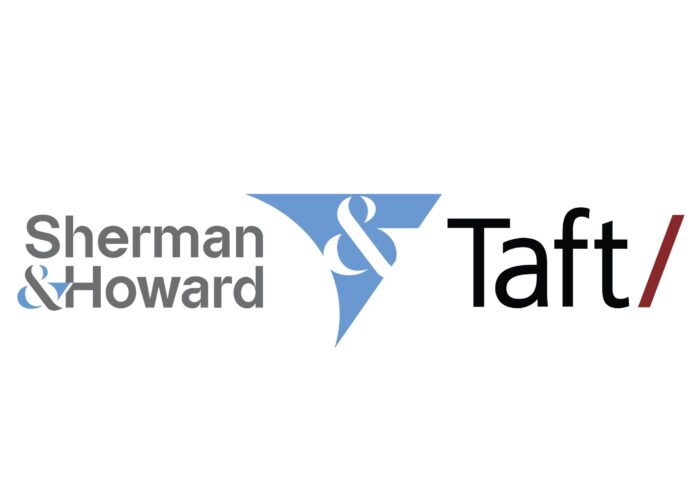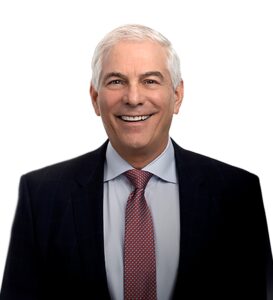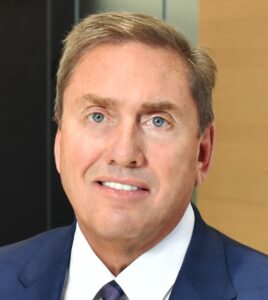
In just a few months, Sherman & Howard will combine with Taft. The two firms combined bring over two centuries of history, and the merger will create a firm with more than 1,000 attorneys and offices in 10 states and Washington, D.C.
Stefan Stein, Sherman & Howard’s CEO, told Law Week that the firm has been considering various strategic initiatives for the past two years. He said the firm wanted to add more breadth and depth to its practice, more practice areas and more subspecialties.
That breadth and depth was important for Sherman & Howard, particularly when it came to large matters. “Whether it’s a huge transaction, or whether it’s a huge piece of litigation, you need to have the resources in order to staff those things,” Stein said.
“We clearly have the talent to play in that arena, and we want to play in that arena, and in order to do that, we have to have an expanded toolbox,” Stein added.

Stein told Law Week that Taft’s platform had exactly what Sherman & Howard both needed and wanted. “It’s got every practice area and subspecialty and industry group that we could imagine. We’re in a much, much better position to serve our clients in a wider variety of ways, and not only in the Rocky Mountain region, but across the country.”
For Taft, this will be its seventh merger. Bob Hicks, chairman and managing partner of Taft, said that the firm doesn’t enter a new market by planting a cursory flag.
“We’ve always relied on getting the skills and longevity and brand and quality of the firms that merge into us,” Hicks said. “For example, you couldn’t come to Denver today and create a new Sherman & Howard.”
Hicks said there are three factors they look for when lining up a merger for Taft: culture, client base and pricing. He also sees the Mountain West as an incredibly attractive market, and he told Law Week that Taft has been looking at it for the past five years. When Hicks and Taft found Sherman & Howard, it all aligned.
“I think on their side, we wanted the same thing they did,” Hicks said. “Taft wants to take its sophisticated middle-market business, which is virtually identical to what Sherman & Howard operates today, and expand it nationally.”
Part of that desire for expansion comes from what clients are looking for today, and according to Hicks, clients expect two things.

“Number one, in your core market, [clients] are very interested in making sure you can cover the waterfront for them on all the substantive subject matters,” Hicks said. “So you get into things like data breaches, they need a firm that has an entire data breach team that can handle that from a legal perspective. To build a practice group like that kind of requires you to be able to draw talent from different pools.”
Both Hicks and Stein brought up the example of federal income tax lawyers as a practice group that benefited from the merger.
“We now have 43 federal income tax lawyers. Each one of our constituent firms that merged into Taft had anywhere from one to three,” Hicks said. “And the problem is to build a really comprehensive tax department, I don’t think I could do it in any one of our markets, including our market in Chicago. I mean it’s just very, very difficult to get that much talent in one market.”
The second thing is the ability to counsel clients that operate both nationally and internationally.
“Our model is really to expand nationally in the United States, do it in a very strategic and systematic way, and then we co-counsel with international firms, as needed, when we are dealing with their country’s laws,” Hicks said.
The combined firms can handle international matters related to tax and regulatory issues beautifully, according to Hicks. “In today’s world, many of our clients are net exporters or importers,” Hicks explained. “You’ve got to be able to do that. That requires a big platform.”
Hicks noted that an important part of Taft’s strategy and ability to merge is its non-headquarter model.
“The problem with the headquarter model is if there’s one headquarters, everyone else feels like a satellite,” Hicks said. “When you want to give autonomy to a market, the last thing you want to do is have it be a satellite. And you need that to feel like the headquarters of its market. The absence of that headquarters helps foster and bolster the concept of local market autonomy.”
While each market has autonomy, Hicks emphasized that it is still one firm, and that comes through in a few different ways.
“We’ve got one compensation plan, we’ve got one way we go recruit, we’ve got one common set of IT systems and websites and conflict of interest rules and how we do those things, all of those things that sort of knit you together as a firm,” Hicks said. “The truth is, that is probably just as important in the overall scheme as each of the markets running themselves.”
Becoming that one firm is a process, and it’s one that’s already underway as Jan. 1, 2025, grows closer. While the firms approved the merger in September, Stein said that they informally started the integration process a little while ago.
“It’s a multi-month process, and because we’ve gotten a head start on all of this, and now it’s really going to take off full bore,” Stein said. “We fully expect to be fully integrated by Jan. 1, 2025.”
Hicks said that with all of Taft’s mergers, the firms are integrated from a system standpoint before the merger goes live. The initial step was an investigatory one, as the firms figured out each other’s systems. That was followed by personnel integration, where big groups from Sherman & Howard were flown to Chicago for in-person meetings. Then Taft flew several people in for a day at Sherman & Howard, where the Taft group met every employee at Sherman & Howard.
Hicks also noted that Taft practices a no-cut policy with its mergers.
“Our model is not to get synergies by getting rid of people, our model is to get synergies by growing and cross-marketing opportunities with each other,” Hicks said. “And we usually get about a 20%+ crossover from work in one market moving to other markets. Usually about 80% of the work in a market gets done by that market, and that market ends up doing about 20% of other people’s work, and vice versa.”
There were a few Sherman & Howard groups in particular that Hicks noted as great pickups for Taft — its bond and private wealth groups.
The new firm will eventually be solely known as Taft, but Hicks said that they will co-brand in Mountain West to give the market time to adjust to the combination. “The market will tell us when it’s time, you’ll just know, and it’s usually as much as three or four years before it’s sort of comfortable, like an old pair of shoes for people.”
Growth is on the agenda for the combined firm as well. Hicks anticipates the Denver office will grow significantly, and he cited the growth of Taft’s Chicago and Minneapolis offices as analogous examples. He also sees Phoenix as an underserved market, and he anticipates Taft growing that office as well.
Hicks also said the firm could grow with other mergers outside of the Mountain West, as Taft wants to expand its middle-market business nationally.
“We’re going to the Mountain West here. We’re also moving east, we’ve gone to Washington D.C.,” Hicks said. “We’ll probably go to Florida, and that’s a lot to chew on, but those are all growth markets. They’re all areas that meet our standards for economics, culture and client base, and the growth factors are really good in those markets.”

